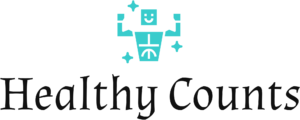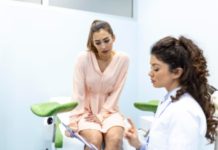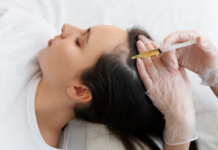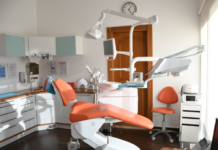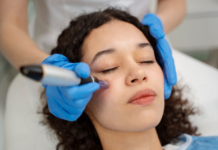Hair loss is a common concern affecting millions of men and women worldwide. Whether it’s due to genetics, stress, hormonal changes, or aging, losing hair can take a toll on one’s confidence. In recent years, a non-surgical solution known as PRP hair treatment has gained popularity for its natural approach to hair restoration. But what exactly is PRP, how does it work, and what should you expect from the treatment? This article covers everything you need to know.
What Is PRP Hair Treatment?
PRP (Platelet-Rich Plasma) hair treatment is a cutting-edge procedure that uses the body’s natural healing components to stimulate hair growth. It involves drawing a small amount of your own blood, processing it to concentrate the platelets, and then injecting the platelet-rich plasma directly into your scalp.
Platelets are rich in growth factors that help in tissue repair and regeneration. When injected into areas of thinning hair, PRP stimulates hair follicles, increases blood supply to the scalp, and promotes natural hair regrowth.
How PRP Hair Treatment Works
Here’s a step-by-step breakdown of how PRP hair treatment works:
1. Blood Collection
The process begins with a simple blood draw, usually from your arm—just like a routine lab test.
2. Centrifugation
The drawn blood is placed in a centrifuge machine, which spins at high speed to separate its components. The plasma rich in platelets is then isolated.
3. Scalp Preparation
The target areas on the scalp are cleaned and may be numbed using a topical anesthetic to ensure comfort during the procedure.
4. PRP Injection
Using fine needles, the PRP is carefully injected into areas experiencing hair thinning or early hair loss. The entire process takes about 60 to 90 minutes, depending on the treatment area.
5. Recovery
Since PRP hair treatment is non-surgical, there’s little to no downtime. Most patients can resume normal activities the same day.
Who Is a Good Candidate?
PRP hair treatment is suitable for both men and women experiencing:
-
Early stages of hair thinning
-
Androgenic alopecia (male and female pattern baldness)
-
Stress-related hair loss
-
Postpartum hair thinning
It’s important to note that PRP works best on patients with functioning hair follicles. It may not be effective for individuals with complete baldness or scarred scalp tissue.
Results: What to Expect
Results from PRP hair treatment are not immediate. Most patients begin to notice improvement after 2 to 3 months, with more visible results around the 4 to 6-month mark. Hair becomes thicker, shedding decreases, and overall scalp health improves.
Typically, a series of 3 to 4 treatments spaced about 4–6 weeks apart is recommended, followed by maintenance sessions every 4–6 months.
Benefits of PRP Hair Treatment
-
Non-surgical: No incisions, scarring, or stitches
-
Natural solution: Uses your body’s own blood components
-
Minimal downtime: Resume activities the same day
-
Safe and effective: Low risk of allergic reactions or side effects
-
Improves hair thickness and scalp health
Side Effects and Risks
While PRP hair treatment is generally safe, some patients may experience:
-
Mild swelling or tenderness at the injection sites
-
Temporary redness or bruising
-
Mild headache or scalp tightness
These effects typically resolve within 24 to 48 hours. It’s important to follow post-treatment care instructions provided by your specialist.
Finding a Qualified Provider
As PRP therapy becomes more popular, many medical spas and aesthetic clinics are beginning to offer it. If you’re searching for a clinic, you may already be familiar with searching terms like “botox and fillers near me”—and the same applies to finding PRP hair treatment providers. Look for professionals who specialize in hair restoration and have experience performing PRP injections.
Many clinics that offer botox and fillers near me also provide PRP therapy, as it’s a natural complement to other anti-aging and cosmetic procedures.
What to Ask During Your Consultation
Before committing to PRP hair treatment, be sure to ask your provider:
-
How many PRP treatments will I need?
-
What kind of results can I realistically expect?
-
Do you have before-and-after photos of previous patients?
-
Are you experienced in treating hair loss specifically?
It’s also wise to verify the credentials of the provider and ensure they use FDA-approved equipment and sterile techniques during the procedure.
Combining PRP with Other Treatments
To maximize results, PRP is often combined with other therapies such as:
-
Microneedling: Enhances the absorption of PRP
-
Low-level laser therapy (LLLT): Boosts circulation to the scalp
-
Topical treatments: Like minoxidil or medicated shampoos
Some clinics also bundle PRP treatments with cosmetic services, so if you’re searching for botox and fillers near me, you may find packages that include PRP therapy for hair or facial rejuvenation.
Final Thoughts
PRP hair treatment is a promising, minimally invasive solution for those dealing with thinning hair. While it’s not a miracle cure for baldness, it can significantly improve hair density, scalp health, and your confidence when performed by a qualified provider. Whether you’re just starting to notice hair loss or looking to enhance the results of other treatments, PRP may be the natural boost your hair needs.
As always, do your research, consult with a licensed practitioner, and don’t hesitate to explore other services like botox and fillers near me if you’re looking for a complete rejuvenation plan.
